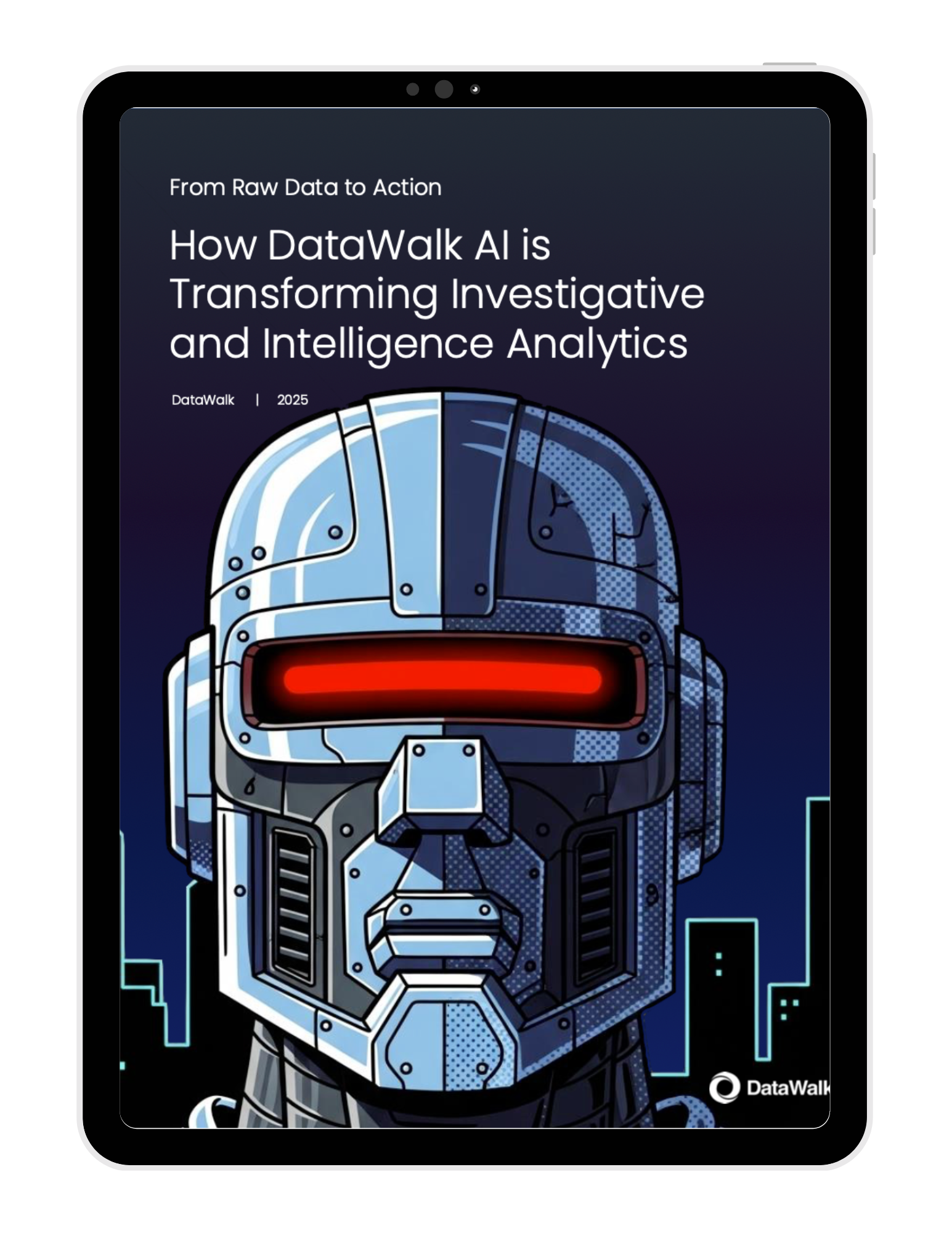
From Data Silos to Data Insight: How to Uncover Internal Fraud Rings Before They Strike
The Potential Multi-Million Dollar Blind Spot in Your Bank's Defenses
In Florida, an $8.8 million fraud ring (1) was only discovered after a bank fraud investigator noticed a single suspicious transaction. The scheme's origin was not an external hacker, but three bank employees who used their credentials to access and sell customer data to a wider criminal network. This was not a failure of transaction monitoring; it was a failure to see a criminal network operating from inside the bank.
Banks lose an estimated 5% of their annual revenue (2) to occupational fraud, with the financial services sector reporting the highest number of cases. The core challenge is that the data needed to detect and stop these schemes is fragmented. Employee system access logs, customer KYC records, transaction histories, and HR data all live in separate systems. This makes it nearly impossible for traditional systems to connect the who (the colluding employee) with the how (the fraudulent activity).
In this article, we’ll explore how to connect your fragmented data to expose and dismantle the sophisticated internal fraud rings that traditional systems cannot see.
ACCELERATE YOUR INVESTIGATIONS WITH PROVEN STRATEGIES AND LESSONS FROM REAL-WORLD SUCCESS STORIES.
Gain access to the DataWalk articles and case studies
For FinCrime Investigators
Gain access to the DataWalk articles and case studies for FinCrime Investigators
Gain access to the DataWalk articles and case studies for FinCrime Tech Professionals
Vulnerable by Design: Why Legacy Systems Fail Against Insider Threats
Financial institutions invest heavily in fraud detection, yet sophisticated internal schemes continue to succeed. The reason is simple: legacy systems are designed with an architectural flaw that insiders are uniquely positioned to exploit.
Rule-Based Systems Are Easily Bypassed
Traditional fraud detection relies on predefined rules, such as flagging transactions over a certain threshold. But what happens when the person committing the fraud is the one with access to change or disable those rules? In one documented case, a bank employee simply used co-workers' credentials to log into the system and access sensitive data, completely bypassing normal security protocols. Your system cannot flag a rule that an insider has already turned off, making a proactive approach to mitigating risk essential.
Siloed Data Creates Crippling Blind Spots
An investigator trying to unravel an internal scheme faces an operational nightmare. They must manually request and try to correlate data from the loan origination system, the core banking platform, HR employee records, and IT's system access logs. Each system “speaks a different language”, leading to weeks of wasted effort while the fraud continues. This fragmentation is the perfect camouflage for criminal networks, allowing them to operate in the gaps between your departments.
ROI in Weeks: How a Leading U.S. Bank Saved Over $40M Annually with DataWalk
Learn More >>>
ROI in Weeks: How a Leading U.S. Bank Saved Over $40M Annually with DataWalk
Making Collusion Visible: The Power of a Knowledge Graph
The only way to defeat a network is with a network view. DataWalk provides this by fusing your fragmented data--transactions, KYC, employee access logs, HR records, and external data–into a single, unified knowledge graph. This is not just another database; it is a model of the real world that organizes information around understandable entities (people, accounts, devices) and their relationships, making collusion far easier to detect.
Instantly Connect the Insider to the Crime
Imagine an analyst investigating suspicious loan applications. With traditional tools, they may spend weeks trying to link applicants to bank employees. With DataWalk, they perform a single visual query to see if any applicants share an address, phone number, or bank account with a current employee. The platform's graph algorithms can automatically reveal a hidden cluster of high-risk accounts all connected to one insider, turning weeks of work into minutes.
Detect the Control Override, Not Just the Transaction
Instead of just flagging a suspicious transaction, DataWalk can correlate it with other critical data points. For example, it can connect a high-value wire transfer that did not trigger an alert with system logs showing that a specific employee accessed and modified the monitoring rules just minutes before. This is the smoking gun that legacy systems miss, but a knowledge graph easily detects.
Empower Analysts with No-Code Speed
Your best investigators should not have to be data scientists. DataWalk’s no-code interface allows fraud analysts to directly visualize, and analyze these complex networks without writing a single line of code. They can test hypotheses in real-time, follow their intuition, and share visual, evidence-based findings with stakeholders. This powerful anti-fraud software accelerates investigations by up to 10x, giving your team the tools they need to stay ahead of sophisticated criminals.
From Reactive Alerts to Proactive Defense
Chasing individual fraudulent transactions while ignoring the internal networks that enable them is a losing battle. The path forward requires breaking down data silos and embracing a unified view of risk. By connecting all relevant data points in a knowledge graph, you can finally see the patterns of collusion that were previously invisible. DataWalk transforms fraud investigation from a slow, reactive process into a fast, proactive hunt for criminal networks. It gives your team the ability to see the complete picture, connect the dots instantly, and stop internal fraud rings before they can cause catastrophic damage.

FAQ
Join the next generation of data-driven investigations:
Discover how your team can turn complexity into clarity fast.

Solutions
Product
Partners
Company
Resources
Quick Links



